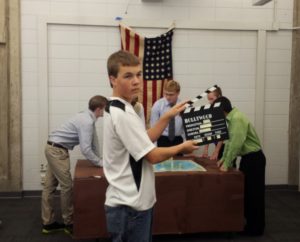
Relationship Skills
Collaboration is a crucial skill that schools around the world are embracing as vital to teach. Every survey of “what employers want” includes it in their top ten list, and the divisive state of politics increases the necessity of students learning it. Collaboration (teamwork) along with communication, social engagement, and relationship -building make up the sub categories of Relationship Skills according to the CASEL Social and Emotional Learning competencies.
One reason why so many students’ Relationship Skills are underdeveloped is that in too many schools, students are still expected to spend the majority of their day listening to a teacher instead of interacting with each other. As I have argued before, PBL is the perfect pedagogy that gives kids the opportunity to practice and develop SEL skills such as Relationship Skills as they negotiate with each other the best path to complete their project.
Reflection is one of the most effective ways to teach SEL competencies!
One of the best ways to teach Relationship Skills throughout a project is consistent student reflections. Reflection throughout the project on their group dynamics gives students opportunities to identify and solve relationship challenges. Students are going to disagree and have different opinions about how to approach their project difficulties. The teacher is the coach helping students to civilly navigate their conflicts in healthy ways. One of the most important ways to forge relationship skills is to have students reflect on how their group is functioning. Reflection helps both successful and struggling groups realize what is happening and how they might adjust if necessary.
Reflection needs to be embedded throughout the project and not just at the end. It does not have to be time consuming. Effective reflections need only take a couple of minutes. At the beginning of class, assign a specific group behavior to focus on such as “Listening with my full attention, before responding.” or use one of the Norms of Collaboration. When class ends, have students individually reflect on the behavior with a Fist to Five or exit ticket or have students reflect with their group with a turn and talk.
When groups are not clicking, refrain from rescuing your students. Instead, have them work through their difficulties. If students struggled the day before in a specific area, start today’s class by reviewing yesterday’s issues and having students reflect on what they need to change to be more successful today. Provide questions related to their struggles and ask them to journal about the experience.
For example, “What is preventing my group from being successful right now?” and “How can we fix this challenge?”
Then students can meet in their groups and discuss issues and potential solutions.
Epic Fail!
My co-teacher and I launched a Choose Your Own Adventure (CYOA) video project on World War I and World War II in our integrated American history and English language arts class. The project married the concept of CYOA books with videos where viewers choose what to do next by clicking on one of two links. Rather than have small groups each make their own video, we decided to have our whole classes of fifty students divide up the tasks to create one giant adventure. Students were placed in different teams based on self-identified skills. The roles included writers, actors, directors, artists for props, lighting and camera operators, and video editors.
Each class created a storyboard on a whiteboard wall, plotting all of the paths and choices like a sideways tree. Groups of students began writing scripts for each scene, including details of the setting and props. When it came time to film, we had students making props and shooting scenes all over campus, indoors and outside. The students did an excellent job of distributing roles and diagramming the big-picture storyboard, but they struggled with the rest of the project.

The organization and management of a project of this complexity and scale were new to us. We underestimated the technology part of the project and did not devise a clear process for getting footage from the cameras to the video editors. Footage was lost and had to be re-shot. Main actors were absent. Costumes and props were forgotten at home. We had not provided students with tools like scrum boards to organize themselves. After several weeks, students still did not have a final product, and we realized that it would still take weeks to complete the videos. (Important side note is that students had learned the required content standards. They just didn’t have the “shiny” product finished). We made the hard choice to kill the project.
Satisfying Success
Although we were disappointed that students never completed their CYOA videos, there was a silver lining. At the end of the year, the same students amazed us during the Water Project, by taking over in ways that teachers never dreamed of. This project involved the entire sophomore class working together as part of three self-selected groups. It was potentially a logistical nightmare, but turned into our best project ever!
During the final reflection of the Water Project, one of the student leaders told me, “Because we failed on the CYOA video earlier this year, we learned how to work together and succeed on the water project.” Using setbacks in projects as learning tools demonstrates for students how challenges can be turned into opportunities. It was a good reminder that students develop SEL skills gradually over the course of a class. Given time, opportunity, and the tools to manage themselves, students will forge Relationship Skills and become leaders who can work together to make meaningful changes.
Questions? Interested in SEL and PBL Consulting? Connect with me at michaelkaechele.com or @mikekaechele onTwitter.

